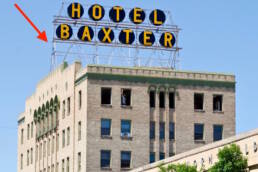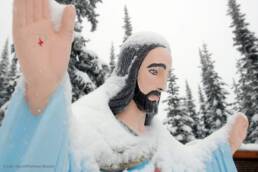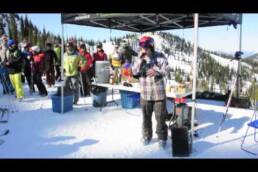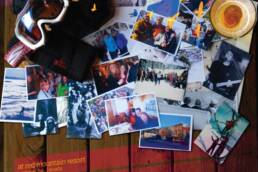When powder plowers in Bozeman, Montana, see the light, it’s time to shred. By Nicholas Lampard.
Barring a two-day power outage in 2007, the blue light on top of Bozeman, Montana’s historic Hotel Baxter has shone reliably for nearly 40 years whenever Bridger Bowl receives five centimetres or more of snow. The non-profit ski area is located on the leeward side of the Bridger Range, 32 kilometres (20 miles) north of Bozeman, and often receives fresh snow when the city doesn’t, so residents turn to the beacon for guidance.
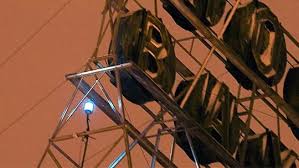
Bridger’s general manager, Terry Abelin, is the reason the light exists. When he first started in 1980, the snow phone was the only way locals could learn if new snow had fallen. He and board member Bill Merrick met to chat about it one morning. “He [Merrick] originally wanted to put up a billboard with a light,” Abelin recalls. “After a beer later that evening, we thought, ‘Screw the billboard, we just need a light up high where everyone can see it.’” Merrick was also on the board of directors for the local airport at the time, and he suggested a runway light, specifically a taxiway light that’s about 15 centimetres tall, blue, and visible for miles.
The Hotel Baxter was a natural location for the light because it rises five storeys above the downtown strip, a landmark building in the classic western American town. Atop its roof is a six-metre-high, 18-metre-long neon sign with the hotel’s name on it, visible from many parts of city. Rather than build a billboard, the duo asked and received permission to hang the blue light on the side of the sign’s framework, where it still resides today. “Merrick ran the wiring to a telephone switch, and the rest was history,” Abelin says. “In early 1981, the light was operational and word was out for why it was there.”
Bridger Bowl’s snow reporters operate the light remotely. After a snowfall, it’s activated via a special hotline with a passcode and remains on for a 24-hour period, beckoning Bozeman skiers to the goods.
Related Stories
This Is Why Mountain Bikers Are Stoked On Whitefish, Montana
There are many reasons why Whitefish, Montana is suddenly on every mountain biker's radar and a 3,800-foot descent is…
Should Big Mountain Jesus Be Saved?
After 60-some years watching over his freeridin' flock, it looked as though the "Big Mountain Jesus" statue at…
Snowbird Snow Sessions
73 inches in 72 hours pretty much sums it up. We went down to SLC to hand out magazines and spread the KMC groove at…
Insane Mountain Beat Boxin’
We don't know who this guy is, or where he came from. He showed up at the Kootenay Coldsmoke PowderKeg Slopestyle last…
The Gathering at Red Mountain
This upcoming Easter weekend RED and POWDER Magazine are presenting the 2nd annual Gathering at RED. Come hang with…


